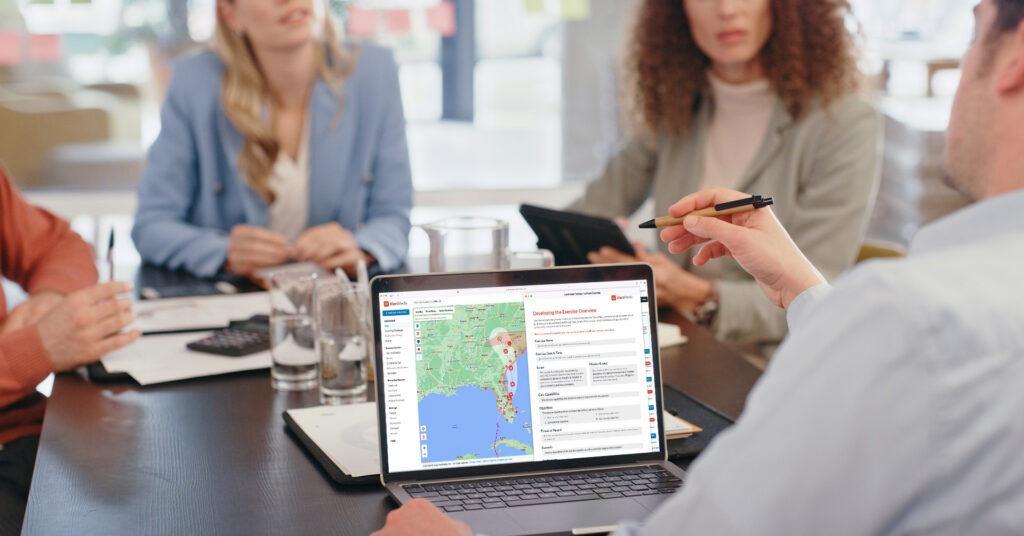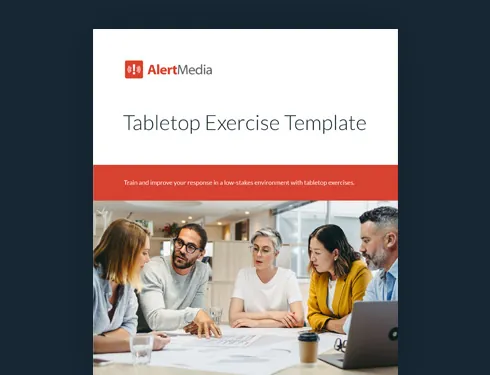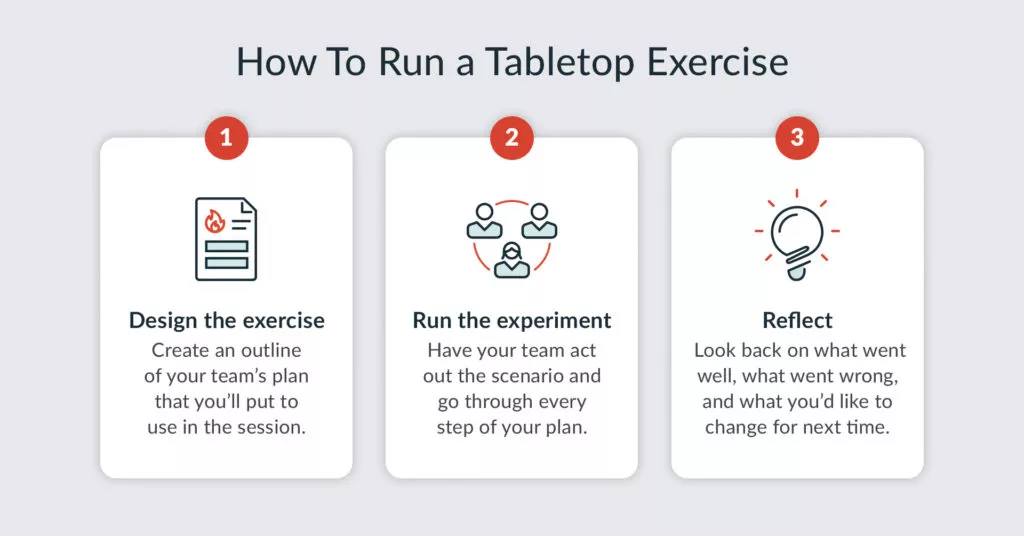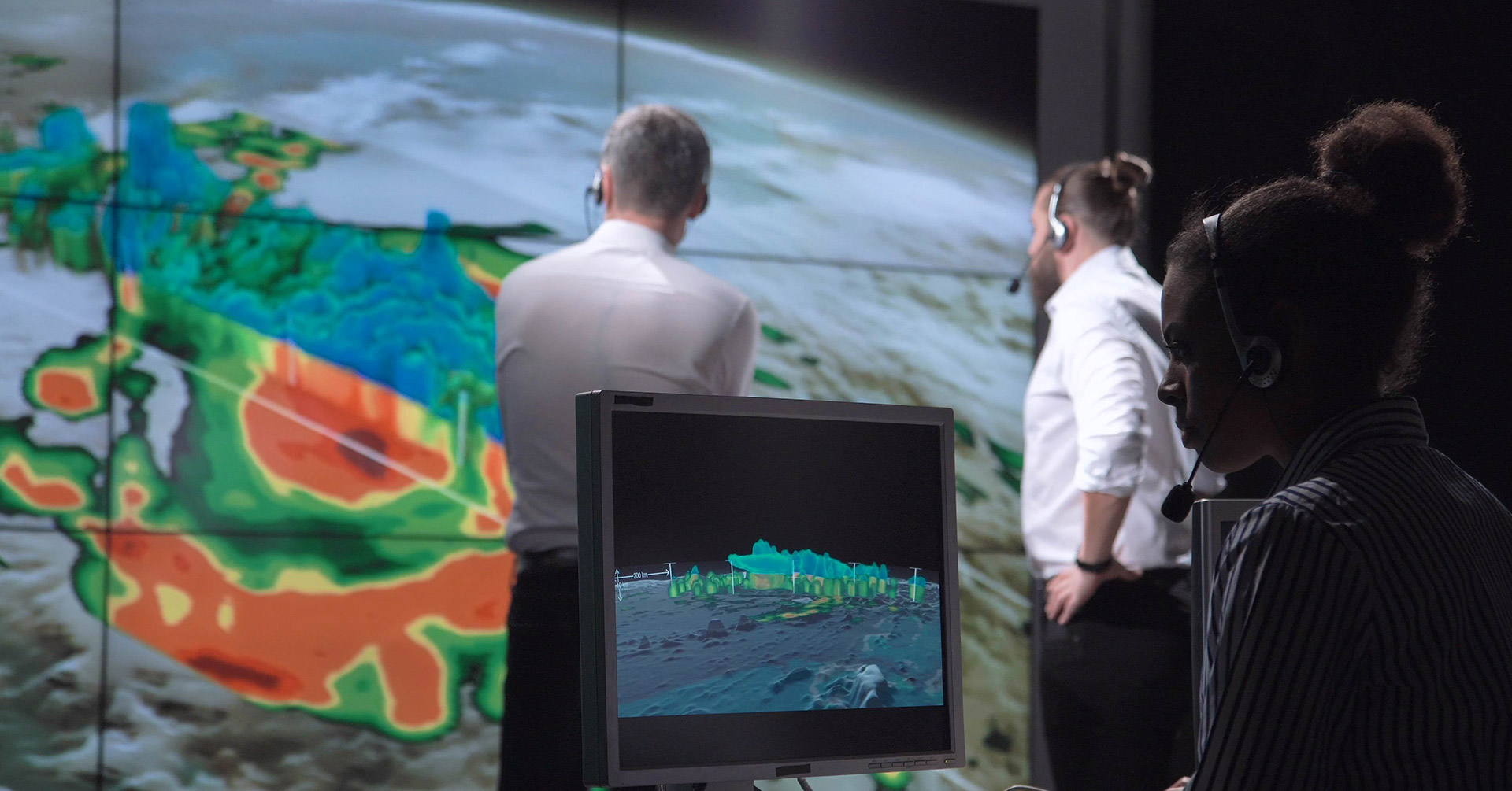
Bracing for the Unknown With a Hurricane Tabletop Exercise
To ensure your operations are resilient and your people stay safe, be ready to meet a hurricane head-on. Rehearse your response plan and identify gaps with tabletop exercises.

“It is better to meet danger than wait for it.” The words of 18th-century English writer Charles Caleb Colton are surprisingly timeless—because that’s the very definition of disaster preparedness. You predict how the disaster will behave so you can plan around it. Fittingly, Colton was referencing a hurricane when he penned that quote. “He that is on a lee shore, and foresees a hurricane, stands out to sea and encounters a storm to avoid a shipwreck.”
But these days, you don’t have to meet the hurricane shoreside to prepare. You can do it with a hurricane tabletop exercise while the skies are still clear.
The Basics of a Hurricane Tabletop Exercise
A hurricane tabletop exercise, or TTX, is a way to assess your organization’s emergency response plan to these natural disasters. These exercises are more important now than ever, as hurricane season predictions show these storms are growing more destructive and less predictable.
During a recent episode of The Employee Safety Podcast, AlertMedia’s senior meteorologist, Jason Moreland, pointed out that our ability to predict the intensity of these storms hasn’t kept pace with the massive population growth in hurricane zone states like Florida, Texas, South Carolina, and Georgia. Meanwhile, employers have larger, more decentralized workforces that they must manage during one of these critical weather events. Finally, weather patterns show that we’re seeing more storms rapidly jump in intensity right before landfall, leaving many unprepared for the devastation they leave behind.
As Colton says, the only way to address the danger is to meet it head-on with an emergency preparedness plan. Your tabletop exercise is the opportunity to test that plan in a low-stakes environment so you can iron out any issues before the severe weather.
As the name implies, it’s an exercise held at a table that allows the participants to discuss various scenarios and walk through their responses. Very broadly, there are three stages to a TTX that your organization should follow.

Get the Tabletop Exercise Template
Designing Your Hurricane Preparedness Exercise
The design of a tabletop exercise scenario is made up of three elements: plans, people, and goals. Specifically, you’ll need to evaluate your current hurricane emergency plan, assign roles to your participants, and set some benchmarks to meet.
What are you testing?
A tabletop exercise doesn’t have to test the entire hurricane preparedness plan. Any emergency response plan is pretty extensive. It will cover everything from communication to evacuations, transportation, loss mitigation, and more. Testing all of these at once may not be feasible. A hurricane tabletop exercise is great for evaluating small portions of it.
Instead, you may break these tests down into smaller bite-sized components. That can help you focus and quickly identify areas of improvement. That was how Beth Harbold, Director of Quality Assurance and Emergency Management at Family First Homecare, handled it when updating her hurricane communications plan for the organization. Being responsible for 400 vulnerable patients across four states, Beth needed to be able to quickly communicate and document her outreach attempts to patients during hurricanes.
While testing her hurricane communications system alone, she realized that none of the messages were attached to a specific office, compromising timely and relevant messaging. This small, seemingly insignificant issue could have caused massive repercussions during a storm. Afterwards, when she put her broader communications plan to the test, Beth was able to understand and correct this problem of location-based alerts. That allowed her to ensure the most efficient message delivery during a hurricane event.
Depending on the size of your organization, it may make sense to do what Beth did. Break your response plan testing into a series of smaller hurricane tabletop exercises. Test out the individual components before bringing it together for a larger emergency drill. That way, you can address issues you may have overlooked and control the number of participants.
Who is participating?
A hurricane tabletop exercise isn’t a full-scale disaster drill, so including every stakeholder may not be necessary. Mainly, you will need enough involved participants to fill four critical roles in the TTX.
Facilitator | Evaluator
The evaluators will document results, as well as both positive and negative impressions. They will also lead the after-action review.
| Observer | Participants
Your participants are the parties who are going to be responding to the hypothetical scenario that the facilitator lays out.
|
What are your goals?
By defining specific goals for your tabletop exercise, you gain valuable insights into your preparedness and areas that require improvement. These goals indicate your readiness, guiding you toward enhancing your emergency response capabilities. Without these benchmarks, gauging your tabletop exercise’s success and identifying growth opportunities would be challenging.
When possible, quantify those exercise objectives. For example, a hospital might set a goal to “Demonstrate efficient communication and information sharing between all hospital departments and key personnel during the exercise.” While that’s a great goal, it cannot be quantified. A more specific goal, like “Achieve 90% success rate in efficient communication and information sharing between all hospital departments and key personnel during the tabletop exercise,” is better because it gives a clear, numerical result.
Running Your Tabletop Exercise
With the design complete, you’re ready to run your tabletop exercise. Choose a private, distraction-free location that allows for collaboration. The facilitator should start the activity by introducing key roles, reminding the participants of goals and objectives, and reading the brief.
The brief is a summary of the hurricane scenario, given with as much detail as would be reasonable in a real event. For example, a hospital might lay out the following situation to start their hurricane tabletop exercise.
Hurricane Abner, a powerful Category 4 storm with sustained winds of 130–156 mph, is approaching the region and is expected to make landfall within 72 hours. Evacuation orders have been issued for individuals in coastal or structurally vulnerable areas. The hospital, located on a main road and currently housing 400 patients, is taking immediate action to prepare for the storm’s impact.
The facilitator then goes over some prompts covering what actions to take based on the disaster plan. They may ask participants to walk them through patient evacuations, structural assessments, or communications to get the conversation flowing.
Participants would then respond to those prompts, again based on the details laid out in the disaster plan. When responding to participants’ answers, the facilitator should attempt to draw out details. For example, if one of the participants answered that they would activate the emergency communications system in response to the above scenario, the facilitator would ask several follow-ups to define that step, such as:
- Who has the authority to activate the system?
- Who physically activates the system?
- How will you confirm this is done?
- Who is on standby if someone can’t perform their task?
- What additional challenges might they face?
These questions drive the scenario forward and allow the participants to identify gaps in their plan. Once the flow of the hurricane tabletop exercise is established, it’s time for the facilitator to add some injects, updates to the situation.
Injecting new challenges into your scenario
Injects are little twists that you add to your scenario to make it more challenging and realistic. Hurricanes are unpredictable storms. Their intensity can change in only minutes, making a minor tropical storm a dangerous weather event. The most significant danger isn’t from the storm, either. Often, the deadliest parts of a hurricane lie in the additional severe weather conditions they stir up or in the aftermath. Injects will help you prepare. Here are some to consider:
- Storm surge: The hurricane has made landfall, and a storm surge is flooding low-lying areas, including your facility’s ground floor and basement.
- Electrical outage: The hurricane’s high winds and heavy rains have caused a widespread power outage and downed power lines, and the facility has lost its primary electricity supply.
- Communication disruption: The hurricane’s impact has disrupted cellular networks and internet connectivity, making communication challenging.
- Supply chain interruption: Due to the hurricane, roads, and transportation routes are blocked, disrupting the facility’s supply chain and business continuity.
- Staff shortage: Team members cannot report to work due to personal emergencies or transportation difficulties caused by the hurricane.
- Evacuation order: Local authorities or FEMA issues an evacuation order due to the severity of the hurricane.
- Structural damage: The hurricane’s strong winds have caused structural damage to parts of the building.
- Secondary hazards: The hurricane has triggered secondary hazards like gas leaks or hazardous material spills nearby.
- Rapid intensification: The National Weather Center’s initial prediction of the hurricane’s intensity was much lower, and now it has intensified to a major hurricane.
Injects like these make the scenario more realistic and address the complications of a hurricane. The most true-to-life scenarios will use several challenges as they often occur together.
If you’d like a more comprehensive review of these exercises and how to run them, we offer an end-to-end explanation in this video:
Reviewing and Documenting Your TTX Results
After testing hurricane scenarios, you must evaluate your results. The evaluator takes center stage here, reviewing the positive and negative aspects. This after-action review (AAR) should be held as soon as possible after the exercise. Sometimes called a hot wash, this session will help you answer four questions:
- What was the plan?
- What was the outcome?
- Why was that the outcome?
- How can you improve?
Avoid assigning blame during your hot wash. Instead, look at where resources and communication failed as issues of process, not people. This approach encourages a more free-flowing conversation where everyone feels safe to share their insights. The leader of the AAR should encourage a problem/solution format, where individuals who bring up issues also come up with an improvement plan. That keeps the conversation productive.
Recognizing and celebrating the successes of your TTX is equally vital during the AAR. Take the time to acknowledge your team’s strengths and consider how to leverage them more effectively in the future. An AAR often reveals untapped resources and previously unknown skills, unlocking new potential for growth and improvement. Embracing these positive aspects can lead to valuable discoveries and enhance your team’s overall capabilities.
The AAR should allow you to develop an after-action report that you will use to summarize your findings and share them with your team. That after-action report should cover the answers to the above four questions and any action items you’ll take to improve. You can develop your own format or use an after-action report template to map out your ideas. You can download our after-action report template here.
Meet the Storm With Proactive Planning
The unpredictability of hurricanes makes testing your preparedness plan essential. Rather than waiting for the storm to strike, it is crucial to meet it head-on through a hurricane tabletop exercise. This exercise allows you to thoroughly assess your response strategies, identify potential issues, and proactively address them before the actual disaster unfolds. Leaders who meet the danger are best prepared to weather it with strength, resilience, and a well-rehearsed plan of action.
Are you ready to test your own response with a hurricane tabletop exercise? Download our hurricane tabletop exercise templates here.





